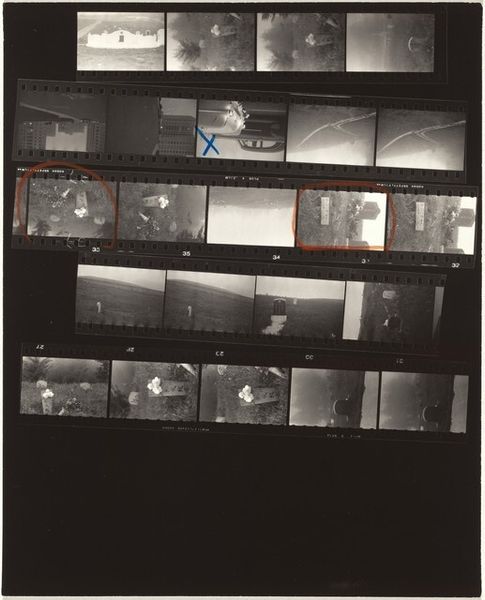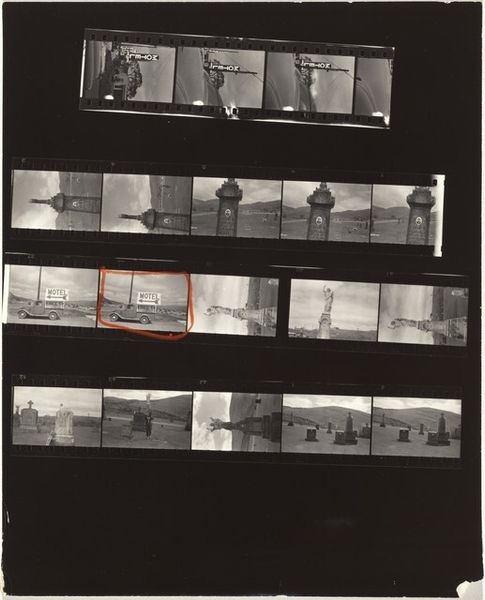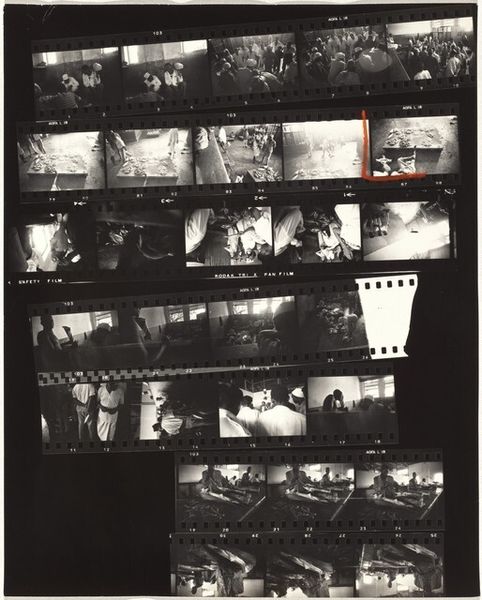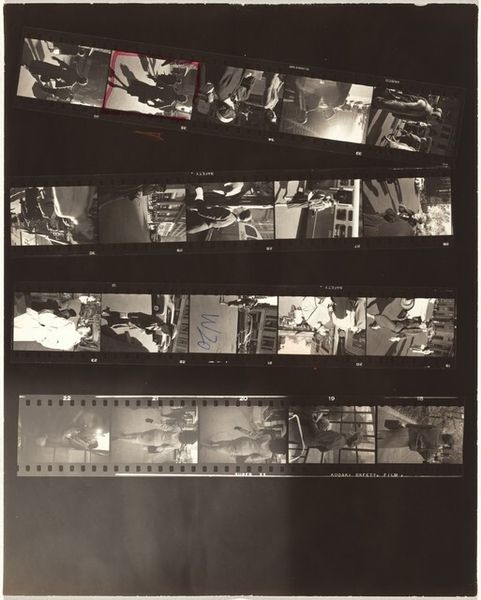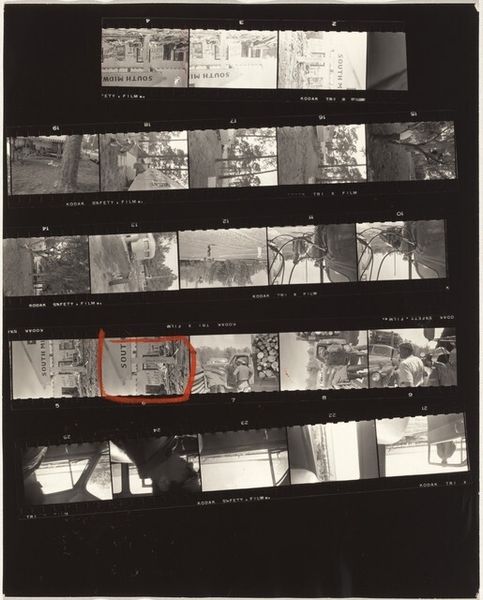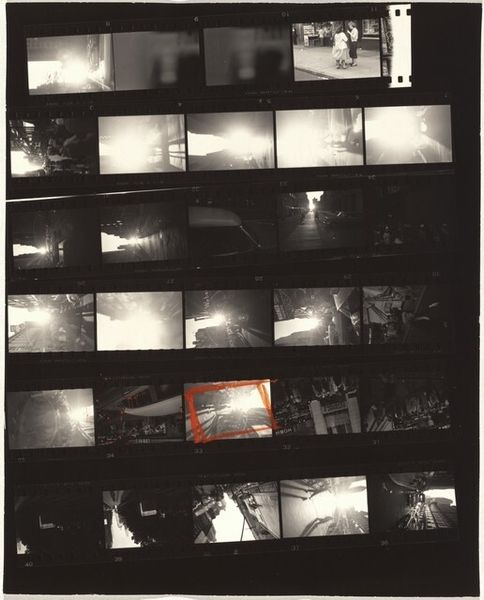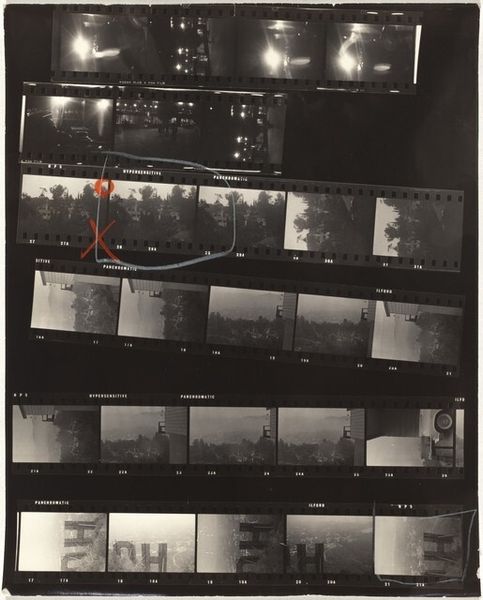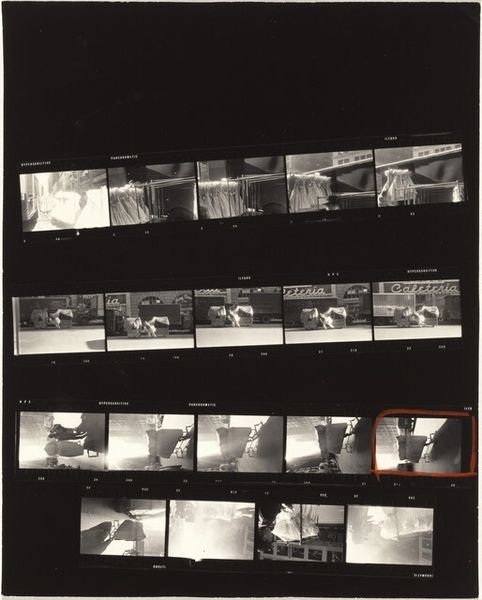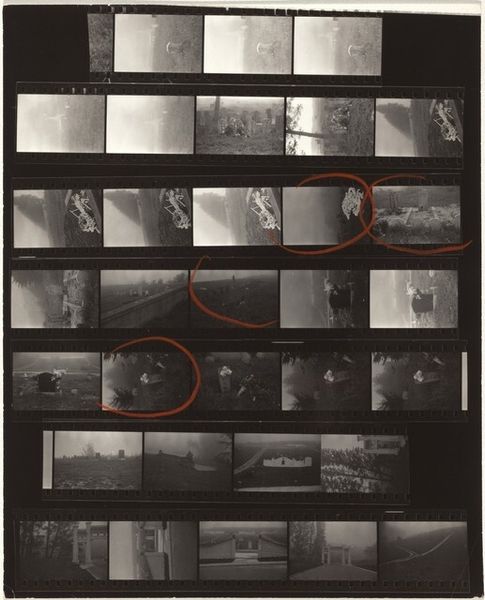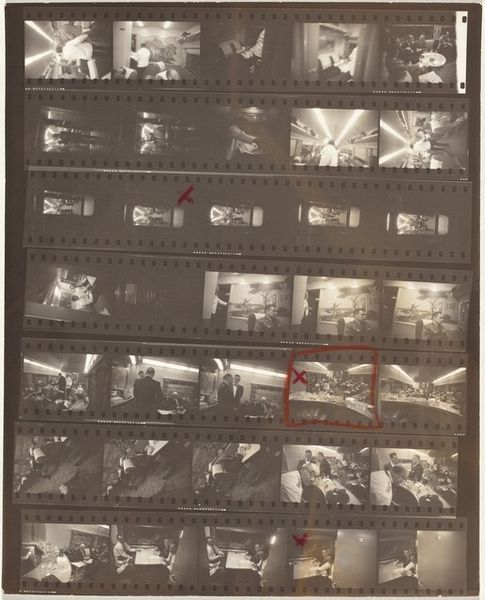
photography
#
film photography
#
landscape
#
photography
#
cityscape
#
film
Dimensions: sheet: 25.2 x 20.1 cm (9 15/16 x 7 15/16 in.)
Copyright: National Gallery of Art: CC0 1.0
Curator: Here we have Robert Frank's "Helicopter over Harbor--New York City no number," taken around 1955. It's quite different from his iconic "The Americans" series. What strikes you first about it? Editor: The grid format, almost like a film strip storyboard, grabs my attention. It feels fragmented, transient. There’s a voyeuristic quality too, given some of the shots appear to be through a window, or of instruments in the helicopter. Curator: Precisely. The image isn't just the city; it's about the process, the journey. We see the indexical trace of the medium itself. The dark surrounding the frames pushes us to consider what it means to see. What's selected and what is left outside the frame is crucial. What does this say about labour for the average worker who rarely gets a view of Manhattan's Harbor from that height? Editor: I’m more intrigued by the selected frame itself. That lone image, a hazy, almost ethereal view of the harbor. The way the light bleeds into the city creates an incredibly unique texture to the grayscale. How do the contrast and tonality speak to you? Curator: The choice of film is telling. Black and white adds to that gritty realism so characteristic of Frank’s work. This aesthetic highlights the conditions in which the photographs were taken, not only that we are seeing the end result of that specific labour using film. Editor: I would add, to focus on its formal properties; the graininess contributes to a sense of immediacy, as if capturing a fleeting moment. Curator: I see how your focus on aesthetic properties could easily divert from its origins; that it may show a world that has been deliberately altered during and after the image had been taken. However, the reality lies in its material conditions that determine that very perception. Editor: Perhaps. Though ultimately, regardless of process, it creates an isolating atmosphere. The formal choice makes the viewer feel distanced. Curator: I am grateful to have this discussion with you. Seeing through your eyes certainly provides a very important reading to any historical process, as that of photography. Editor: Likewise, the socio-economic realities you bring into this really gives depth and historical importance, enriching our interpretations of this fascinating piece by Robert Frank.
Comments
No comments
Be the first to comment and join the conversation on the ultimate creative platform.
